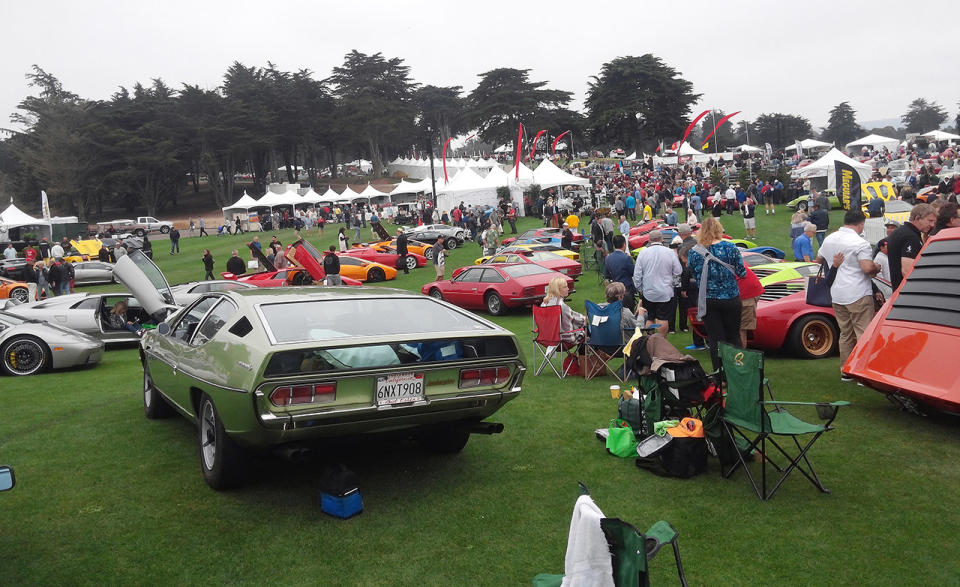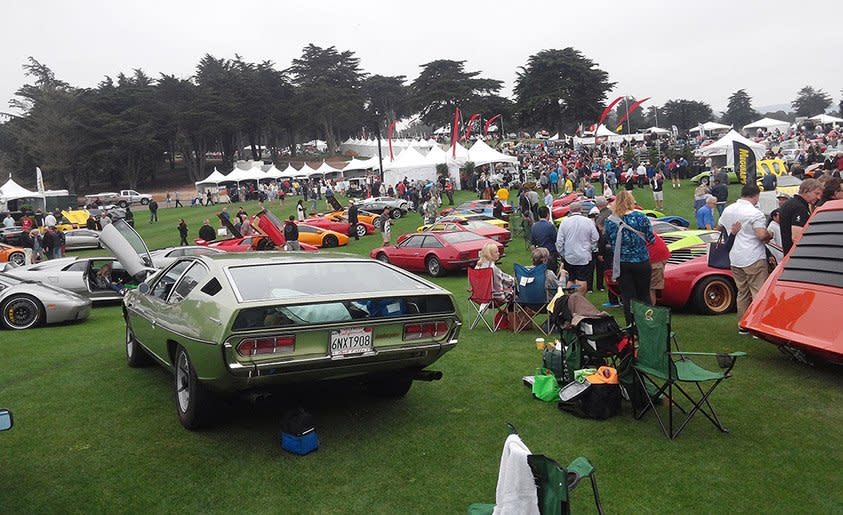Fixing Vehicles on the Fly, Or: Another Lamborghini Espada Road-Trip Adventure


From the December 2016 issue
Taking the chipped prop off my Cessna 150 was as simple as taking a wheel off a car. Cut some safety wire and zip out the six AN6 bolts. In five minutes my majestic flea went from being a perfectly usable aircraft to a completely inert heap of 47-year-old aluminum and streaky Plexiglas. However, putting a propeller back on a plane, I learned, is not nearly so simple. For six weeks, the 150 did nothing but make long hangar shadows.
Thus was I foiled in my romantic plan to fly from Los Angeles to the annual Monterey automotive glitz-a-thon. Indeed, I was so downcast about not being able to fly to either Pebble Beach or to the Bonneville salt races the week before—where I had planned to land at Wendover Field, the same historic Utah strip where the crews of the Enola Gay and Bockscar trained for their war-ending A-bomb drops—that I decided to crap out of Pebble Beach altogether and sit at home sulking.
Hence, I had exactly no reservations and nothing planned on the Friday of Monterey when I suddenly changed my mind (curse you, Facebook!) and decided to make the journey in my 46-year-old Lamborghini Espada. The lascivious, green four-seater had become an Airbnb for garage spiders over the months that I ignored it because it wasn’t exactly running on all the cylinders exactly all the time. However, in that moment I convinced myself in the particularly ridiculous way that owners of broken Italian exotics routinely convince themselves that all the car needed was its carbon cauliflowers blown out by a hard run.
My friend Mitch Clements arrived dutifully at my house at three o’clock the next morning, my idea so as to both avoid L.A. traffic and also get us to the big Concorso Italiano show 330 miles north by 8:30 a.m. We rolled out in the darkness, making it just past the first mile before Mitch spoke up. “I don’t think she’s running on all 12,” he said, quietly, as if talking about someone in the back seat. The car fumbled and pinged. Mitch recently finished restoring his ’63 Jag XK-E to lustrous show-winning brilliance, so his observations carry tonnage. “Just needs to warm up,” I mumbled.

Friends helped save the green flyer after a rough landing at Concorso.
Accelerating north onto the 405, the Espada ran up to speed okay but lacked some of its usual bullish enthusiasm for a deserted freeway. By Santa Barbara we realized that it was boozing on its 21 gallons like Dean Martin back in old Napoli. Barely 180 miles up we had to stop and re-brim the twin 10.5-gallon tanks, the Espada burning gas at exactly twice the rate of the Cessna. Well, we were too far into the journey to quit, so we kept calm and carried on. Reaching the show, the car was barely able to scramble up the last hill to its parking spot.
I went over to my friend Bob Huber, a professional Lambo mechanic in Los Angeles, and described the symptoms. “It’s those dang pistons in the carbs,” he said, and yes, he really did say “dang” because Bob is nice. Immediately, I knew which dang pistons he was talking about. The Weber DCOE side-draft carb—there are six on an Espada—is a marvelous mixer of air and fuel, but it ages about as gracefully as a cone of triple gelato. The mechanism by which you choke a DCOE to enrich the mixture for cold starts involves a couple of small brass pistons in each carb that, when cranked up by the driver via the choke cable, allow a copiously rich mixture for those cylinders. A back-spit by the engine, common on startup, can drive the pistons up, and if they’re getting a little gummy with age, they’ll stay up, meaning those cylinders are deluged with fuel and there’s nothing the driver can do about it from the cockpit.
Nothing on an Espada is an easy fix—except this. After the show, Mitch and I popped and pinged over to my friend John Lacey’s motel and spent the next hour opening the carbs and cleaning up the pistons with some fine emery board John got at CVS. John and Mitch have been coming to Monterey since the mid-’60s, and as they worked—what are friends for if not to fix your busted Lambo?—they reminisced about park trees they had slept under and the cops that had run them off and Peter Revson in the Corkscrew.
After we buttoned up the carbs, the engine ran flawlessly, the fuel economy rocketing from 9 mpg to 12. It’s a happy memory, partly because it’s so rare that friends can come together in a motel parking lot to fix a broken car and actually fix it. So often the project stalls because you need a shop that will weld cracked aluminum on a Saturday night or parts from Fukuoka.
The thing about a plane is that when you have a problem, it’s almost never a laughing matter. A Lamborghini Espada, on the other hand, never runs out of ways to make you laugh. Or put your friends to work. Things happen for a reason, I guess.

 Yahoo Autos
Yahoo Autos 